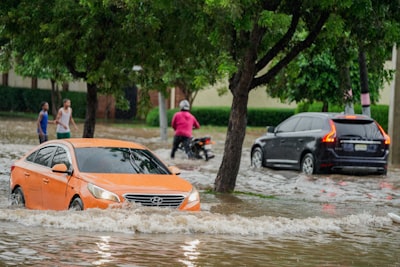How Federal Budget Cuts Affect Extreme Weather Forecasting: Lessons from the Texas Floods
After the devastating Texas floods, questions are swirling about whether federal government cuts—particularly at the National Weather Service (NWS)—may have compromised the nation’s ability to predict and prepare for such disasters. In an age of increasingly extreme weather events, the role of government funding, meteorological staffing, and weather forecasting technology has never been more crucial. Here’s what you need to know about the broader implications.
The Impact of Federal Budget Cuts on the National Weather Service (NWS)
Recent debates have put the spotlight on government budget cuts, especially as the Trump administration proposed reductions to the National Oceanic and Atmospheric Administration (NOAA), which oversees the NWS. While some of the largest proposed cuts would only take effect in the coming fiscal year, the NWS has already experienced a significant workforce reduction. This reality has raised concerns over:
- NWS vacancies and staffing shortages
- The ability to maintain a robust network of local meteorological offices
- Implications for timely and accurate weather alerts and disaster warnings
Do Staffing Reductions Lower Weather Forecast Quality?
A core concern for many is the potential erosion of weather forecasting quality. With about 600 jobs lost from a 4,200-strong staff, some NWS offices are operating with 20% or more vacancy rates. These gaps have prompted:
- Delays or reductions in weather balloon launches in parts of the country
- Fewer specialized roles (like hydrologists) at local offices
- Potential challenges in communications between the NWS and local emergency management teams
However, experts add nuance: For the recent Texas floods, available data indicate that forecasts and warnings were delivered as expected. The issue, they note, is that some types of rapidly developing, highly localized flooding can still elude even the best-prepared teams.
Weather Balloons, Technology, and Emerging Challenges
Weather balloons are another hot topic. As budget and staffing constraints have grown, so too have disruptions to regular upper atmosphere observations from balloon launches. While Texas’s Del Rio station kept its schedule prior to the recent disaster, concerns remain about:
- The cumulative impact of nationwide balloon cutbacks
- How missed data might affect forecast accuracy, especially during complex or rare weather patterns
Why Does Forecast Communication Matter?
Forecast data is only effective when it’s shared promptly and translated into actionable public warnings. Some meteorologists argue that cuts to vital positions—like warning coordination meteorologists—could make communication with emergency management services less efficient, slowing down critical community responses.
What Can Be Done to Improve U.S. Disaster Preparedness?
The Texas floods illustrate several important takeaways for both policy makers and the public:
- Investing in sustained government funding for the NWS and related agencies is vital for maintaining America’s disaster resilience.
- Developing and training specialized roles (like hydrologists and forecaster-communicators) prepares local offices for rare, high-impact events.
- Leveraging technology (such as improved flood modeling and AI-based analytics) can supplement traditional observation and forecasting tools.
FAQ: Government Weather Service Cuts and Extreme Events
Q: Did government cuts cause the Texas disaster?
A: No direct evidence suggests they did, though some local offices faced higher than ideal vacancy rates.
Q: Are U.S. weather balloons being launched less often?
A: Yes, some cuts in staffing have led to reduced balloon launches, but not in the areas affected by the Texas floods.
Q: Can local vacancies hinder disaster communication?
A: Experts say missing roles can make a difference, especially in handling coordination and outreach, even if forecasts themselves remain accurate.
Key Takeaway
While America’s weather forecasting infrastructure remains world-class, ongoing cuts and vacancies can test our emergency readiness, especially as climate-driven extreme events become more common. Investing in both staffing and technological resilience is essential to safeguarding our communities from the next big weather event.
Want to learn more? Visit NOAA’s National Weather Service and FEMA’s preparedness resources.

Comments
No comments yet. Be the first to comment!